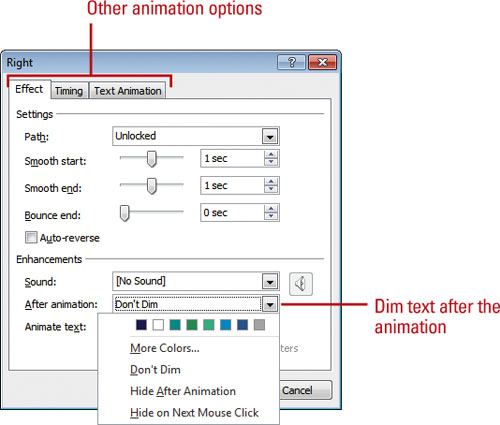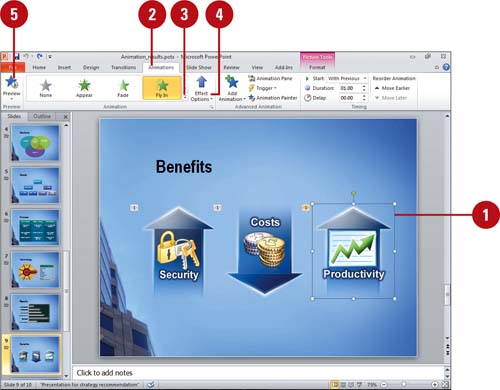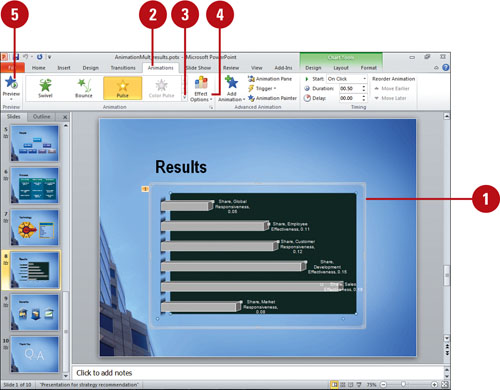Using specialized animations, you can quickly apply animations specific to certain objects using the Animations tab (New!).
For example, for a text object, you can introduce the text on your
slide all at once or by word or letter. Similarly, you can introduce
bulleted lists one bullet item at a time and apply different effects to
older items, such as graying the items out as they are replaced by new
ones. You can animate charts by introducing chart series or chart
categories one at a time.
Animate Text or Bulleted Lists
- 1. In Normal view, select the text object you want to animate.
- 2. Click the Animations tab.
- 3. Click the Animation list arrow, and then click an animation (Entrance, Emphasis, Exit, or Motion Paths).
- For some motion paths, click points to create a path.
- 4. Click the Effect Options button, and then specify any of the following:
- Direction. Select a direction for the animation: Down, Left, Right, or Up.
- Sequence. Select a grouping for the animation: As One Object, All At Once, or By Paragraph.
- Origin. Select Locked or Unlocked.
- Path. Select Edit Points to change the animation path, or Reverse Path Direction.
- 5. To dim text after the animation, click the Animation Dialog Box Launcher, click the After Animation list arrow, click the dim text color or option you want, and then click OK.
- 6. To see the animation effect, click the Preview button.


Animate Shape Elements
- 1. In Normal view, select the shape you want to animate.
- 2. Click the Animations tab.
- 3. Click the Animation list arrow, and then click an animation (Entrance, Emphasis, Exit, or Motion Paths).
- For some motion paths, click points to create a path.
- 4. Click the Effect Options button, and then select a direction.
- 5. To see the animation effect, click the Preview button.

Did You Know?
You can view a slide’s animation quickly in Slide Sorter view. In Slide Sorter view, click a slide’s animation icon to view the animation.
Animate Chart Elements
- 1. In Normal view, select the chart you want to animate.
- 2. Click the Animations tab.
- 3. Click the Animation list arrow, and then click an animation (Entrance, Emphasis, Exit, or Motion Paths).
- For some motion paths, click points to create a path.
- 4. Click the Effect Options button, and then select a grouping sequence (As One Object, By Series, By Category, By Element in Series, or By Element in Category).
- 5. To see the animation effect, click the Preview button.

|